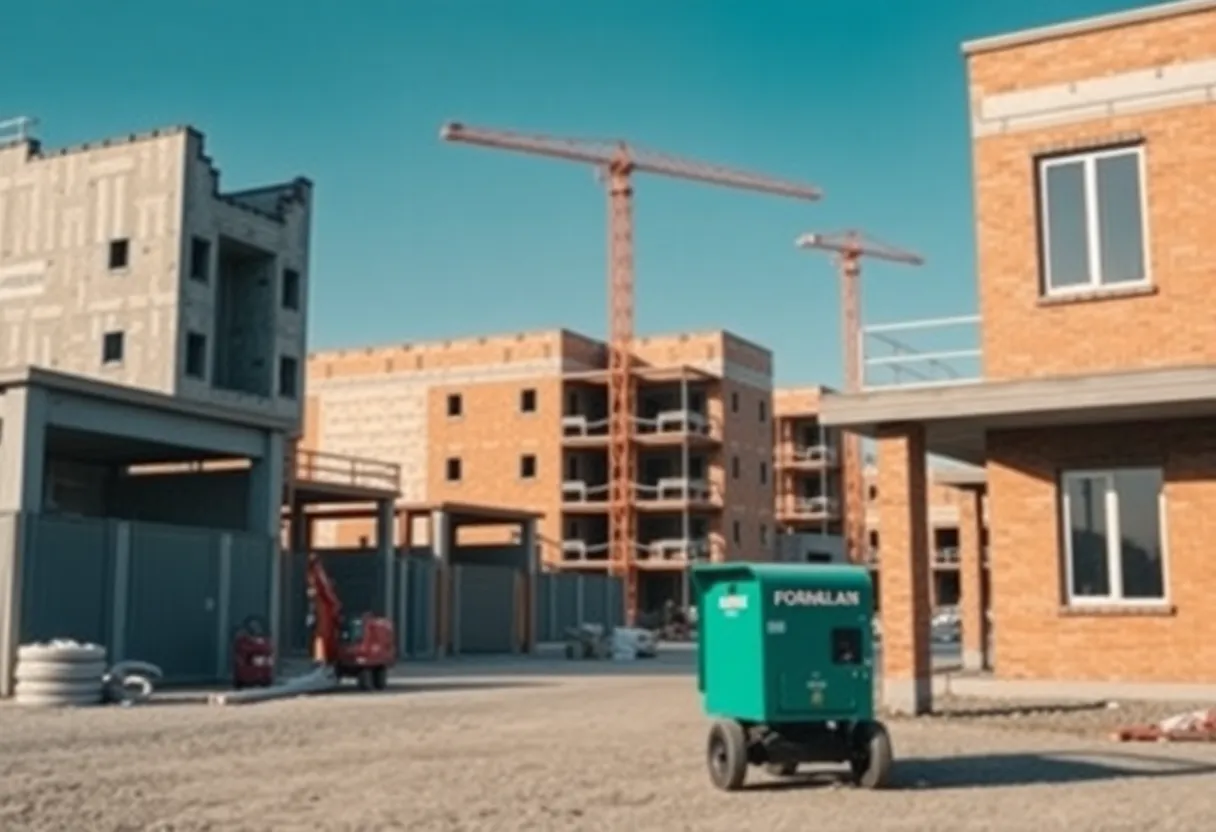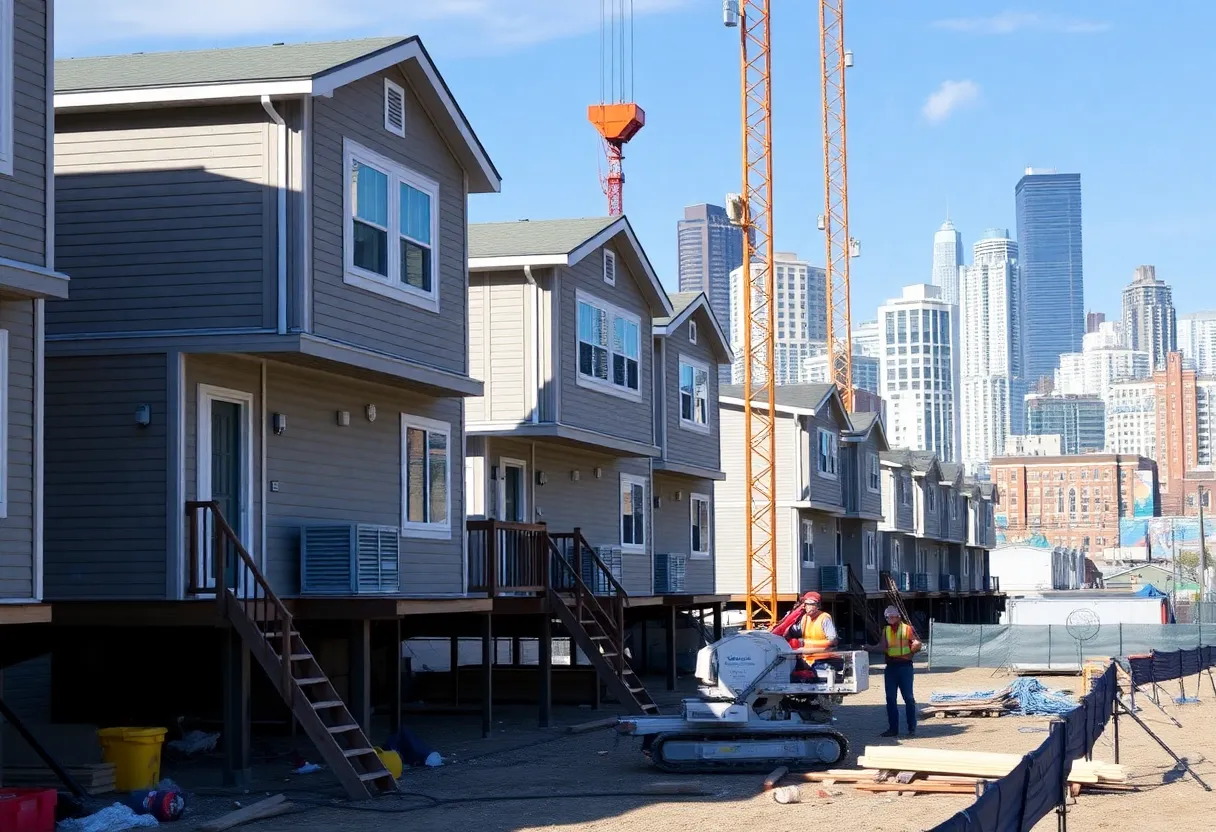San Francisco, August 26, 2025
News Summary
A major software firm announced reductions impacting about 1,350 employees worldwide, reallocating headcount and capital into artificial intelligence, cloud services, and platform investments. The move highlights a broader challenge for the architecture, engineering, and construction (AEC) sector: a persistent “data interstice” where fragmented, unstructured project data prevents AI from delivering full value. Startups and incumbents are building interoperability, BIM automation, safety tech, and robotics to bridge that gap. Investors prioritize standardized data formats, scalable SaaS models, and ESG alignment, but integration complexity and required human oversight pose adoption and near-term return risks.
Autodesk cuts 1,350 jobs to shift resources to AI and cloud as AEC sector confronts a “data interstice”
The industry saw a major shift Thursday when a large design software firm announced a reduction of roughly 1,350 roles, including 289 positions at its San Francisco headquarters, as it redirects investment toward artificial intelligence and cloud services. The move is part of a broader moment for the architecture, engineering, and construction (AEC) sector, which analysts say is grappling with a systemic data problem that is holding back practical AI adoption.
Top lines: layoffs, timing and financial impact
The cuts affect about 9 percent of the company’s global workforce and were disclosed in a regulatory filing and internal company communications. San Francisco reductions are concentrated at an office at One Market Plaza, with those local layoffs taking effect in late April. The company expects pre-tax restructuring charges in the range of approximately $135 million to $150 million. Employees will be notified starting the week following the announcement.
Why the change: strategy shift to AI, cloud and platform services
Company leadership framed the action as a strategic reallocation of resources to build cloud platforms and AI capabilities and to reshape go-to-market operations. The stated aim is to accelerate work on connected industry clouds, generative design, and embedded AI across tools used by design and construction professionals.
How this relates to the wider AEC sector
Industry analysts say the timing aligns with a turning point for AEC after decades of fragmented data, manual workflows, and hierarchical handoffs. The sector generates large volumes of information through building information modeling (BIM), CAD files, site sensors, and project management systems, but much of that data is locked in incompatible formats or siloed systems.
Analysts have coined the phrase data interstice to describe the transitional gap where fragmented BIM, sensor feeds, and project tools prevent seamless AI integration. This interstice is described as a systemic bottleneck: unlike finance or healthcare, construction data is often unstructured, inaccessible to machine learning models, and unable to represent spatial relationships in ways that enable reliable AI reasoning.
Practical limits on AI without better data
Generative design tools can create thousands of permutations quickly, but those results remain theoretical unless designs tie directly to current cost data, material availability, and code compliance. Similarly, AI-powered scheduling and risk platforms can only surface accurate, actionable warnings when they integrate with established schedulers such as Primavera P6 or Microsoft Project and with live field reporting.
Where startups, software and robotics fit in
A wave of startups and established firms are attempting to bridge the data gap by unifying datasets, automating workflows, and providing predictive insights. Some firms, described by analysts as rewriting the architecture of construction tech rather than making incremental updates, focus on project management and risk mitigation, design automation, site safety, robotics, or BIM and interoperability.
Examples include platforms that integrate scheduling to predict delays and automate workflows, and tools that add AI to project controls to enable real-time budget tracking and streamlined submittal processing—reducing administrative overhead in some cases by up to 40 percent. Design automation pioneers let architects and developers iterate site plans based on zoning, cost, and yield constraints, shrinking design cycles from weeks to hours. Other firms use spatial AI to compare as-built conditions to planned designs for real-time progress tracking.
Safety and automation are central use cases. Computer-vision systems detect unsafe behaviors and recommend preventive steps, while smart wearables offer predictive analytics for fall detection and compliance monitoring. Robotics firms deploy semi-autonomous machines for tasks such as bracket layout and site inspection to remove workers from hazardous conditions and improve precision. The global construction robotics market is forecast to grow rapidly, while the construction management software market is estimated at $1.2 trillion and projected to grow at about a 12% CAGR through 2030.
Investment outlook and risks
Investors are being advised to favor companies that tackle both technical and cultural barriers: openBIM standards, data standardization, enterprise scalability, and clear monetization models such as subscription SaaS or embedded AI in hardware. Backing firms that standardize data formats and scale across use cases could position investors to capture value as tools mature into enterprise-grade solutions over the next five years.
However, significant risks remain. The AEC sector tends to adopt new technologies slowly, many AI tools still require human oversight, and practical interoperability challenges persist. Projections suggest AI could cut construction costs by as much as 20 percent and shorten timelines by around 15 percent by 2030 if these problems are addressed, creating the potential to unlock trillions in industry value.
What to watch next
- Progress on openBIM and other interoperability standards.
- Partnerships that link platform-level AI to field tools and sensors.
- Early enterprise deployments that demonstrate measurable safety, cost, or schedule improvements.
- How large software vendors reinvest savings from restructuring into cloud and AI product roadmaps.
FAQ
What happened to the software firm’s workforce?
The company announced a reduction of about 1,350 positions globally, including 289 roles at its San Francisco office, and plans to close some facilities. The reductions are part of a strategic shift toward AI and cloud investments.
What is the “data interstice” in construction?
The term describes a transitional bottleneck where fragmented BIM files, sensor data, and project management tools prevent effective AI integration. Data is often unstructured or incompatible, limiting AI’s ability to reason about spatial relationships and make reliable predictions.
Which technology areas are startups focusing on?
Startups are active in project management and risk mitigation, design and site planning automation, site safety and compliance, construction robotics, and BIM/data interoperability.
How big is the market opportunity?
The construction management software market is estimated at $1.2 trillion, and the global AEC industry totals roughly $13 trillion. Analysts expect strong growth in software and robotics sectors over the coming decade.
What are the main risks for investors?
Key risks include slow adoption in the AEC industry, the need for continued human oversight of AI tools, and technical hurdles around data interoperability. Investors are advised to back firms with enterprise scalability and strong partnerships.
Key features at a glance
| Feature | What it does | Example | Potential impact |
|---|---|---|---|
| Data interoperability | Standardizes formats so tools can share information | openBIM-focused platforms and cloud collaboration | Enables AI to reason across models and field data |
| Generative design | Produces many design options quickly | AI-enabled site planning tools | Shortens design cycles from weeks to hours |
| Project risk platforms | Predicts delays and automates workflows | Scheduling-integrated analytics | Reduces schedule risk, improves collaboration |
| Site safety tech | Detects unsafe behavior and tracks compliance | Computer vision systems and smart wearables | Lower injury rates and regulatory compliance |
| Construction robotics | Automates hazardous or repetitive tasks | Semi-autonomous inspection and layout robots | Improves safety and precision; market growing fast |
Deeper Dive: News & Info About This Topic
Additional Resources
- SF Examiner: Autodesk to cut nearly 300 San Francisco workers
- Wikipedia: Autodesk
- SFGate: Autodesk layoffs coverage
- Google Search: Autodesk layoffs 2025
- SF Chronicle: Autodesk layoffs and AI restructuring
- Google Scholar: Autodesk AI cloud layoffs 2025
- KRON4: Autodesk to cut 9% of workforce
- Encyclopedia Britannica: Autodesk
- Morningstar/PR Newswire: Autodesk launches freemium access to Autodesk Flow Studio
- Google News: Autodesk Flow Studio freemium 2025
Author: Construction NY News
The NEW YORK STAFF WRITER represents the experienced team at constructionnynews.com, your go-to source for actionable local news and information in New York and beyond. Specializing in "news you can use," we cover essential topics like product reviews for personal and business needs, local business directories, politics, real estate trends, neighborhood insights, and state news affecting the area—with deep expertise drawn from years of dedicated reporting and strong community input, including local press releases and business updates. We deliver top reporting on high-value events such as the New York Build Expo, infrastructure breakthroughs, and cutting-edge construction technology showcases. Our coverage extends to key organizations like the Associated General Contractors of New York State and the Building Trades Employers' Association, plus leading businesses in construction and real estate that power the local economy such as Turner Construction Company and CMiC Global. As part of the broader network, including constructioncanews.com, constructiontxnews.com, and constructionflnews.com, we provide comprehensive, credible insights into the dynamic construction landscape across multiple states.





